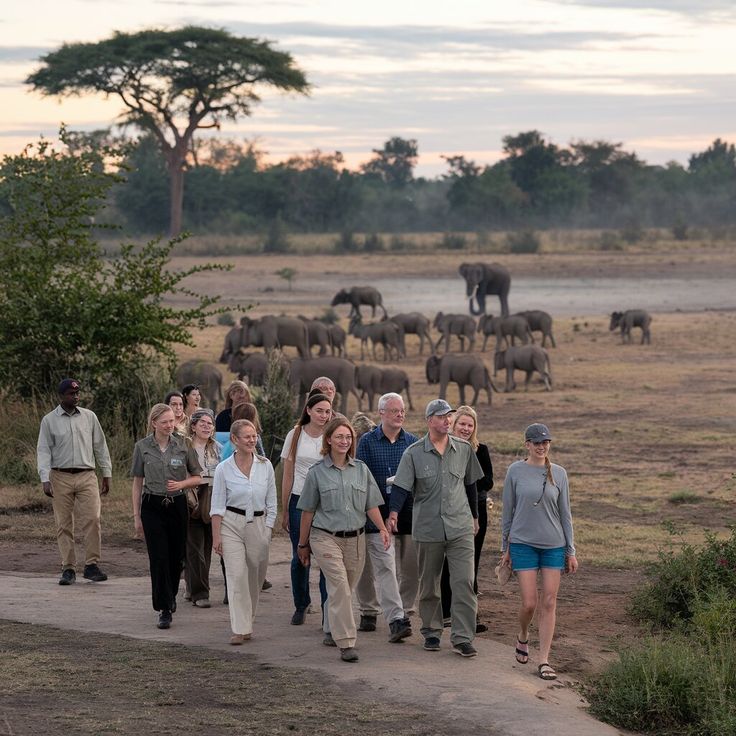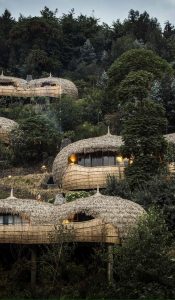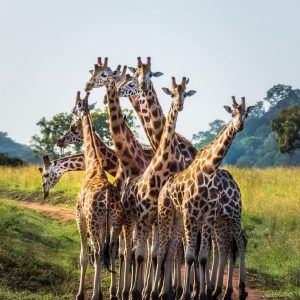When most travelers think of a safari in Uganda, they picture open-top vehicles, winding through savannahs in search of lions, elephants, and giraffes. But there’s a deeper, more immersive way to explore Uganda’s wilderness: Walking Safaris in Uganda
A walking safari is not just a physical activity—it’s a journey into the soul of the wild, where every step reveals new sights, sounds, and scents. Uganda, with its diverse ecosystems, offers some of the best walking safari experiences in East Africa, especially for those seeking authentic encounters beyond the vehicle window. Walking Safaris in Uganda
What Is a Walking Safari in Uganda?
A walking safari is a guided, on-foot exploration of natural habitats, allowing travelers to observe wildlife, plants, and ecosystems at close range. Unlike traditional game drives, walking safaris focus on intimate experiences—reading animal tracks, listening to bird calls, identifying medicinal plants, and understanding the natural behavior of Uganda’s flora and fauna.
It’s not about how many animals you spot—it’s about how deeply you connect with nature.
Where Can You Go for a Walking Safari in Uganda?
Uganda has several national parks and reserves where walking safaris are offered legally and safely under the guidance of armed, trained Uganda Wildlife Authority (UWA) rangers.
1. Lake Mburo National Park – Uganda’s Top Walking Safari Destination
Lake Mburo National Park is the best place in Uganda for classic walking safaris. Unlike many parks where large predators restrict walking activities, Lake Mburo is home to non-aggressive wildlife, making it ideal for exploration on foot.
During your walk, you may encounter:
- Zebras
- Elands
- Impalas
- Warthogs
- Buffaloes
- Topis
- Abundant birdlife
Rangers guide you through savannah landscapes, acacia woodlands, and seasonal wetlands, pointing out tracks, animal droppings, and interesting plants. Walks typically begin in the early morning or late afternoon when animals are most active.
2. Kidepo Valley National Park – Remote and Rugged Walking Trails
If you’re seeking raw wilderness and fewer crowds, Kidepo offers walking safaris in one of Africa’s most remote and dramatic landscapes. Located in Uganda’s northeast, Kidepo is rich in both scenery and wildlife.
Here, walking safaris take you across open savannah plains and rugged hills, often near the Narus Valley or around the Lomej Hills. You may see:
- Ostriches
- Jackson’s hartebeest
- Kudus
- Waterbucks
- Elephants from a safe distance
This park is best for adventurous travelers looking for off-the-beaten-path experiences.
3. Ziwa Rhino Sanctuary – Track Rhinos on Foot
Ziwa Rhino Sanctuary is the only place in Uganda where you can track wild rhinos on foot. This is not just a walk—it’s an adrenaline-pumping encounter with one of Africa’s Big Five.
Under the close supervision of rangers, visitors track southern white rhinos in a 70-square-kilometer private sanctuary. Along the way, you may also spot:
- Antelopes
- Monkeys
- Bushbucks
- Shoebill storks in nearby wetlands
The sanctuary serves an important conservation role, and your visit helps support the reintroduction of rhinos to Uganda’s national parks.
4. Bwindi Impenetrable Forest – Nature Walks and Cultural Trails
While Bwindi is globally known for mountain gorilla trekking, it also offers guided forest walks and cultural walking trails around the park.
These walks focus on:
- Birdwatching (Bwindi is a birder’s paradise)
- Plant and tree identification
- Batwa community cultural experiences
- Scenic hikes to waterfalls and community villages
Though not a big-game walking safari, it’s a deeply enriching ecological and cultural journey.
5. Kibale Forest National Park – Forest Walks with Primates
Kibale is the primate capital of East Africa, and while chimpanzee trekking is the main attraction, the park offers guided nature walks for those interested in birding, plant identification, and spotting smaller forest dwellers.
You can walk during the day or even take part in a night forest walk, where you may see nocturnal creatures like bush babies, civets, and nightjars.
What Can You Expect During a Walking Safari in Uganda?
- You’ll be accompanied by armed rangers and sometimes local guides or naturalists.
- Walks typically last 1 to 3 hours, depending on the location and your interest level.
- Wildlife sightings are possible, but the focus is on natural interpretation, not chasing animals.
- You’ll learn about animal behavior, ecology, geology, and local cultural uses of plants.
The pace is slow and deliberate, offering plenty of time for photography and questions.
Is It Safe to Go on a Walking Safari in Uganda?
Yes, Uganda’s walking safaris are well-regulated and safe, provided you go with authorized guides and rangers. The Uganda Wildlife Authority ensures safety protocols are in place for all guided walks.
You’ll receive a briefing before your walk that includes:
- Keeping a safe distance from animals
- Staying silent and alert
- Following the guide’s instructions at all times
- Walking in single file and avoiding sudden movements
In high-risk zones, such as rhino tracking or savannah walks, rangers are armed and trained in handling wildlife encounters.
What Should You Pack for a Walking Safari?
To stay comfortable and safe, bring:
- Lightweight hiking boots or sturdy walking shoes
- Long-sleeved shirts and trousers (for sun and insect protection)
- A wide-brimmed hat and sunglasses
- Sunscreen and insect repellent
- Binoculars for birding
- Water bottle or hydration pack
- Camera with zoom lens
Always pack light and leave no trace behind.
When Is the Best Time for a Walking Safari in Uganda?
Walking safaris are best enjoyed during Uganda’s dry seasons:
- June to September
- December to February
During these months, trails are more accessible, visibility is better, and there’s less risk of heavy rains. However, some parks like Lake Mburo and Ziwa offer walks year-round with minor adjustments for wet conditions.
Why Choose a Walking Safari in Uganda?
- Get closer to nature and observe wildlife behavior in a more detailed way
- Enjoy quiet, crowd-free experiences compared to game drives
- Learn directly from knowledgeable guides
- Connect with local cultures and ecosystems
- Support conservation efforts and community tourism initiatives
Whether you’re a first-time visitor or a seasoned traveler, walking safaris offer a different and deeply personal view of Uganda’s wild places.
Slow Down and Walk the Wild
In a world where speed often dominates travel, a walking safari in Uganda invites you to slow down, listen, and engage with nature on its own terms. Whether you’re tracking rhinos, spotting birds in ancient forests, or crossing golden savannahs on foot, every step brings new discovery and perspective.
So, the next time you plan a safari in Uganda, don’t just drive walk.
Your journey through the Pearl of Africa will be all the richer for it.




